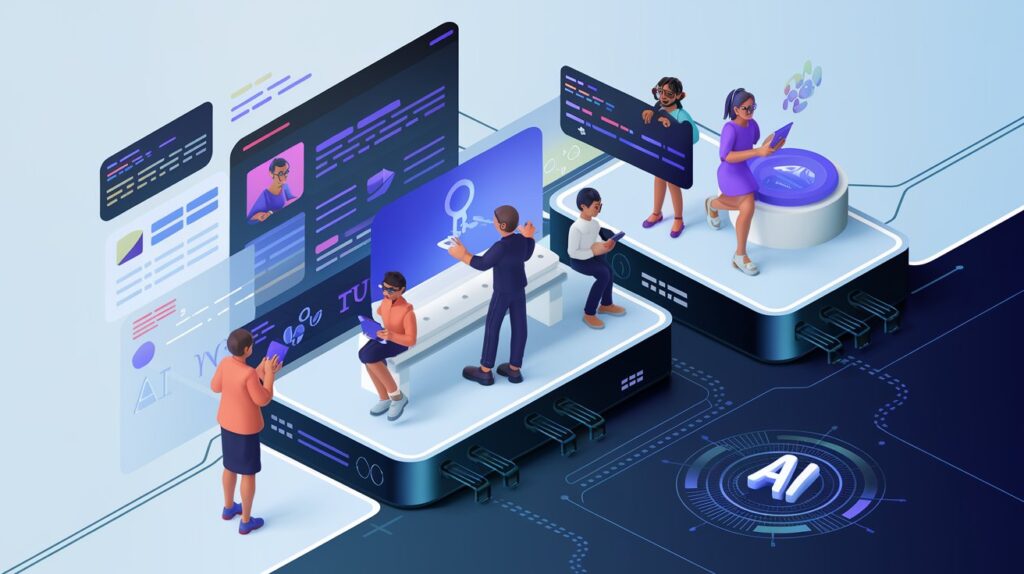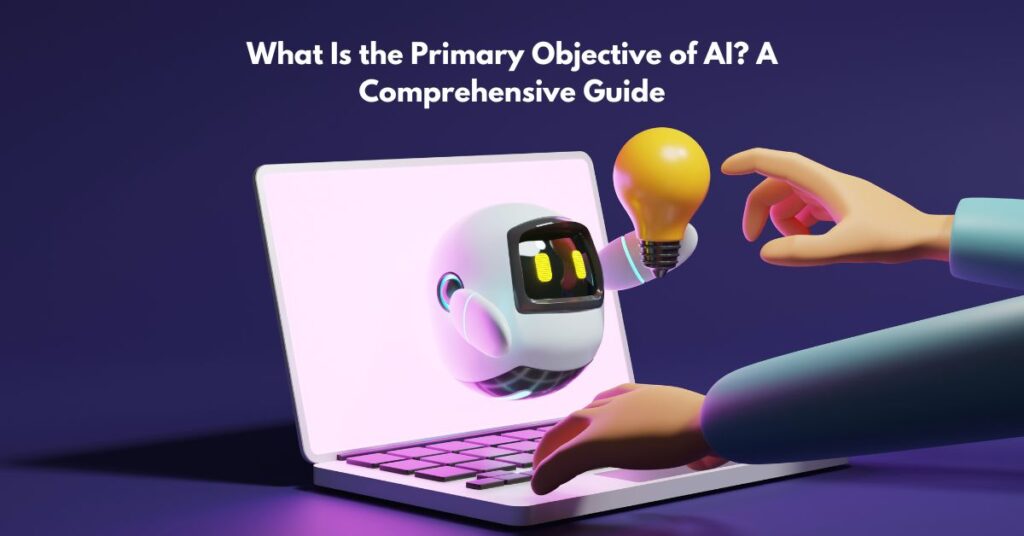Introduction
Technology’s role in education has dramatically evolved, with artificial intelligence (AI) emerging as a powerful tool for enhancing teaching and learning. In the realm of mathematics education, AI offers promising solutions to address common challenges faced by teachers. This article explores how AI tools can support math teachers by providing personalized learning experiences, boosting student engagement, and streamlining administrative tasks.
Table of Contents
Importance of AI Tools in Math Education
AI tools bring several advantages to math education:
- Personalized Learning: AI can tailor lessons and practice problems to meet individual student needs, helping them learn at their own pace.
- Enhanced Engagement: Interactive AI tools can make math more engaging, encouraging students to actively participate and stay motivated.
- Administrative Efficiency: AI can automate grading, track progress, and analyze data, allowing teachers to focus more on instruction.
Top 10 AI Tools for Math Teachers
Here’s a research table highlighting ten standout AI tools for math education:
| Tool Name | Description | Key Features | Benefits | Website Link |
|---|---|---|---|---|
| Mathigon | An interactive platform that offers personalized math resources and activities. | Adaptive practice, interactive lessons | Engages students with interactive content; customizes learning experiences. | Mathigon |
| Khan Academy | Provides a wide range of educational resources, including personalized math practice. | Personalized learning dashboard, video tutorials | Offers comprehensive math resources with adaptive learning paths. | Khan Academy |
| DreamBox | Adaptive math program for K-8 students, focusing on personalized learning and real-time feedback. | Real-time data analysis, adaptive learning paths | Supports differentiated instruction; tracks student progress effectively. | DreamBox |
| Aleks | Web-based program that assesses students’ knowledge and provides targeted instruction. | Adaptive learning, detailed progress reports | Identifies knowledge gaps; personalizes instruction to meet individual needs. | Aleks |
| Socratic | AI-powered app that helps students with homework by providing step-by-step explanations and solutions. | Step-by-step explanations, problem-solving guidance | Assists students with homework; improves understanding of complex concepts. | Socratic |
| Photomath | An app that uses AI to solve math problems and explain the steps involved. | Step-by-step solutions, photo capture of problems | Helps students understand problem-solving processes; offers instant feedback. | Photomath |
| Zearn | Provides a comprehensive math curriculum with interactive lessons and assessments. | Interactive lessons, personalized feedback | Supports curriculum delivery with engaging activities and real-time feedback. | Zearn |
| Mathway | Offers solutions and explanations for a wide range of math problems through an AI-powered app. | Instant problem-solving, detailed explanations | Provides immediate help with math problems; enhances understanding through detailed solutions. | Mathway |
| Cognimates | AI tool that enables students to create their own AI models while learning math concepts. | Custom AI model creation, interactive lessons | Encourages creativity and deeper understanding of AI concepts in math education. | Cognimates |
| Socratic by Google | Helps students with homework by analyzing pictures of problems and providing step-by-step solutions and explanations. | Problem analysis, step-by-step guidance | Improves problem-solving skills; offers detailed solutions and explanations. | Socratic by Google |
Detailed Explanation of Each Tool

Mathigon
Mathigon offers interactive and personalized math resources that adapt to students’ learning needs. It engages students with interactive lessons and practice problems, making math more accessible and enjoyable. Teachers have reported significant improvements in student motivation and understanding.
Khan Academy
Khan Academy’s platform provides a wealth of educational resources, including personalized math practice tailored to each student’s level. Its adaptive learning dashboard and video tutorials help students progress at their own pace, offering a comprehensive solution for math instruction.
DreamBox
DreamBox is designed for K-8 students, offering adaptive math instruction that responds to students’ needs in real time. Its real-time data analysis helps teachers track progress and tailor instruction, making it a valuable tool for differentiated learning.
Aleks
Aleks provides targeted math instruction based on students’ knowledge assessments. Its adaptive learning and detailed progress reports help identify and address knowledge gaps, supporting personalized learning pathways.
Socratic
Socratic assists students with homework by providing step-by-step explanations and solutions. Its AI-powered app enhances students’ understanding of complex concepts, making it a useful tool for both learning and teaching.
Photomath
Photomath uses AI to solve and explain math problems through photo capture. It offers detailed solutions and explanations, helping students grasp problem-solving techniques and improve their math skills.
Zearn
Zearn delivers a comprehensive math curriculum with interactive lessons and assessments. Its engaging activities and personalized feedback support effective curriculum delivery and student learning.
Mathway
Mathway provides instant solutions and explanations for a variety of math problems. Its detailed feedback helps students understand and solve problems more effectively, making it a valuable resource for homework and study.
Cognimates
Cognimates allows students to create their own AI models while learning math concepts. This tool encourages creativity and deeper understanding of AI applications in math education, bridging the gap between technology and learning.
Socratic by Google
Socratic by Google helps students with homework by analyzing pictures of problems and offering step-by-step solutions. Its detailed guidance enhances problem-solving skills and understanding.
Conclusion
AI tools are revolutionizing math education by offering personalized learning experiences, increasing student engagement, and streamlining administrative tasks. Math teachers can leverage these tools to enhance their teaching strategies and support student success. As AI technology continues to advance, its potential to transform education will only grow, offering exciting possibilities for the future of teaching and learning.
FAQs
1. What are AI tools for math teachers? AI tools for math teachers are software applications that use artificial intelligence to enhance math instruction, provide personalized learning experiences, and streamline administrative tasks.
2. How can AI tools benefit math education? AI tools benefit math education by offering personalized learning, improving student engagement, and increasing efficiency in administrative tasks.
3. Are AI tools easy to integrate into existing math curricula? Many AI tools are designed to integrate seamlessly with existing curricula, though some may require additional training or adjustments to align with specific teaching goals.
4. What features should I look for in an AI tool for math teaching? Key features to look for include personalized learning paths, interactive content, real-time feedback, and robust data analysis capabilities.
5. Can AI tools replace traditional teaching methods? AI tools are designed to complement traditional teaching methods, not replace them. They provide additional support and resources to enhance the learning experience.
6. Are there any free AI tools for math teachers? Yes, some AI tools offer free versions or trial periods. Khan Academy, for example, provides free access to a wide range of educational resources.
7. How do AI tools improve student engagement in math? AI tools use interactive and adaptive content to make learning more engaging, which helps keep students motivated and involved in their studies.
8. What are some challenges of using AI tools in math education? Challenges may include the need for technical training, potential resistance to new technology, and ensuring that AI tools align with educational standards and goals.
9. How can I evaluate the effectiveness of an AI tool for my classroom? Evaluate effectiveness by considering factors such as student feedback, improvements in learning outcomes, ease of use, and alignment with curriculum objectives.
10. What is the future potential of AI in education? The future potential of AI in education includes more advanced personalized learning, predictive analytics for student performance, and innovative teaching methods that leverage AI technology.


